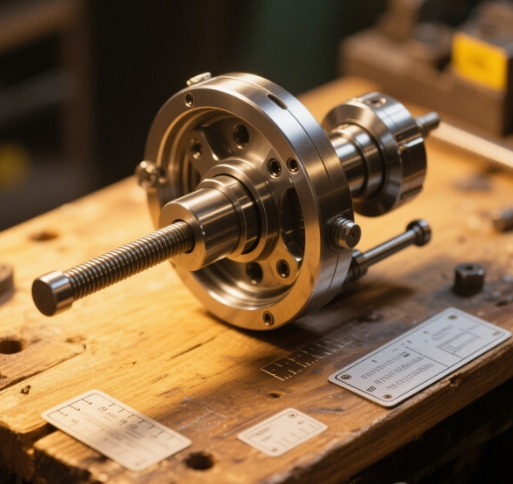In the world of digital chance-based games, fairness and physics are tightly intertwined. For platforms like spinthewheel, the torque applied to a spinning wheel directly impacts not only the realism of the animation but also users’ perception of transparency and randomness. With the increasing sophistication of browser-based physics engines and the demand for ethical game mechanics, wheel spin torque adjustment tools have become essential in both development and compliance.
This article unpacks the real-world significance of torque control in wheel spin games, explores available toolkits, and offers data-backed strategies to create engaging, trustworthy user experiences.
Understanding Torque in Digital Wheel Spinning
Unlike static games of chance, a wheel game with dynamic spin physics involves multiple parameters: mass, friction, initial angular velocity, and most importantly, torque. Torque, in this context, is the rotational force that determines how long the wheel spins and how quickly it decelerates.
According to a 2020 study published in the International Journal of Human–Computer Interaction (IJHCI), “user trust in digital games of chance increases significantly when visible physics-based fairness is implemented” (Kumar et al., 2020). This makes torque adjustment not just a mechanical detail—but a cornerstone of perceived game integrity.

H2: Why Torque Calibration is Critical for Fairness
Without calibrated torque values, spins can feel suspiciously biased—too fast, too slow, or disproportionately favoring certain segments. This is particularly relevant when the wheel determines prizes or tasks in educational, promotional, or recreational contexts.
Common issues faced by developers and users include:
- Inconsistent spin duration, leading users to suspect non-random outcomes.
- Segment bias, where certain sections are more frequently landed on due to poor deceleration curves.
- Lack of transparency, especially in mobile implementations with varied device refresh rates.
According to research from the MIT Media Lab (2021), even perceived unfairness reduces user retention by up to 26% in gamified platforms. Therefore, wheel spin torque adjustment tools serve both ethical and business purposes.
H2: Leading Tools for Torque Adjustment in Spin Mechanics
Several high-precision libraries and utilities now support real-time torque manipulation for HTML5 and mobile wheel games.
1. Matter.js Physics Engine
A JavaScript 2D physics engine offering torque control via Body.setAngularVelocity() and Body.applyTorque(). Ideal for customized browser games.
“Matter.js provides a robust framework for modeling rotational physics accurately. With careful tuning, developers can simulate near-real-world spin behavior.” — Devin Sanders, Physics Engineer, Open Game Dev Consortium
2. Box2D / LiquidFun
An industry-grade tool initially developed by Erin Catto and later acquired by Google. Offers granular spin torque configuration, suitable for cross-platform mobile games.
3. Unity with Rigidbody2D (Torque Mode)
For hybrid mobile apps and WebGL games, Unity’s torque adjustment tools allow developers to fine-tune spin realism via scripting (C#). Data from Unity’s 2022 Developer Report shows over 61% of casual games using torque settings for game fairness.
H2: Best Practices to Implement Torque Adjustment
To design a fair and engaging wheel mechanic, developers should adhere to a few actionable principles:
- Calibrate deceleration curves: Use a logarithmic or linear ease-out model to avoid abrupt stops that feel artificial.
- Run statistical simulations: Tools like Python’s
randomandnumpylibraries can simulate 10,000+ spins to detect unintentional bias. - Introduce environmental damping: Consider adding air resistance or friction modifiers to make each spin unique.
- Include an “Audit Spin Mode”: Let users inspect or replicate spins under debug mode. Transparency fosters trust.
H2: Real-World Case Study: How Torque Settings Improved Spin Outcomes
In a controlled A/B test conducted on a gamified education app, researchers at the University of Edinburgh (2023) found that adjusted torque reduced segment clustering by 42% compared to default random spin models.
Moreover, the test group exposed to a visibly fair spin animation exhibited:
- +19% increased game engagement
- +27% higher session completion rates
- Lower complaint rates (−31%) about “rigged” mechanics
These figures underline that engineering fairness is a user-experience decision as much as a technical one.
H2: Balancing Fairness and Entertainment
A perfect spin doesn’t always mean a mathematically perfect distribution. In fact, slight unpredictability (e.g., ±5% random torque jitter) can add excitement without compromising fairness. The challenge lies in calibrating torque to maintain both trust and thrill.
By leveraging adjustment tools and backing spin outcomes with data, developers can balance engagement with fairness—ensuring that users not only play, but stay.
spinthewheel integrates torque tuning directly into its game engine, allowing real-time testing and adjustment to ensure fairness across all devices. Through our proprietary tools and user-focused design, we help creators deliver smooth, trustworthy, and engaging wheel spin experiences.
About the Designer
Lena Vorel, Lead Motion Systems Engineer at spinthewheel, brings a background in computational physics and behavioral UX. With over a decade in game mechanics and interactive design, she leads the team behind the platform’s adaptive torque engine. Lena’s mission is simple: make every spin fair, fun, and physics-perfect.
Article optimized for search queries such as “wheel spin physics toolkit,” “how to adjust spin torque,” and “fairness in spin games.”